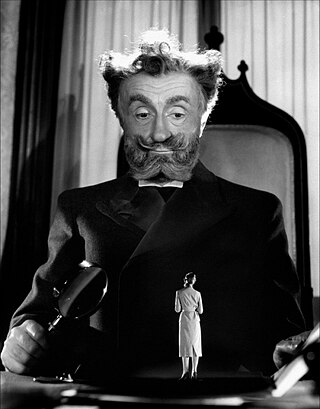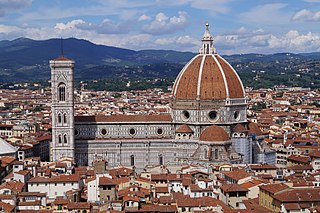
A wargame is a strategy game in which two or more players command opposing armed forces in a realistic simulation of an armed conflict. Wargaming may be played for recreation, to train military officers in the art of strategic thinking, or to study the nature of potential conflicts. Many wargames recreate specific historic battles, and can cover either whole wars, or any campaigns, battles, or lower-level engagements within them. Many simulate land combat, but there are wargames for naval and air combat as well.

Special effects are illusions or visual tricks used in the theatre, film, television, video game, amusement park and simulator industries to simulate the imagined events in a story or virtual world.

Ship models or model ships are scale models of ships. They can range in size from 1/6000 scale wargaming miniatures to large vessels capable of holding people.

A model car, or toy car, is a miniature representation of an automobile. Other miniature motor vehicles, such as trucks, buses, or even ATVs, etc. are often included in this general category. Because many miniature vehicles were originally aimed at children as playthings, there is no precise difference between a model car and a toy car, yet the word 'model' implies either assembly required or the accurate rendering of an actual vehicle at smaller scale. The kit building hobby became popular through the 1950s, while the collecting of miniatures by adults started to pick up momentum around 1970. Precision-detailed miniatures made specifically for adults are a significant part of the market since the mid-1980s.

Motion control photography is a technique used in still and motion photography that enables precise control of, and optionally also allows repetition of, camera movements. It can be used to facilitate special effects photography. The process can involve filming several elements using the same camera motion, and then compositing the elements into a single image. Other effects are often used along with motion control, such as chroma key to aid the compositing. Motion control camera rigs are also used in still photography with or without compositing; for example in long exposures of moving vehicles. Today's computer technology allows the programmed camera movement to be processed, such as having the move scaled up or down for different sized elements. Common applications of this process include shooting with miniatures, either to composite several miniatures or to composite miniatures with full-scale elements.

Miniature wargaming is a form of wargaming in which military units are represented by miniature physical models on a model battlefield. The use of physical models to represent military units is in contrast to other tabletop wargames that use abstract pieces such as counters or blocks, or computer wargames which use virtual models. The primary benefit of using models is aesthetics, though in certain wargames the size and shape of the models can have practical consequences on how the match plays out.

A scale model is a physical model which is geometrically similar to an object. Scale models are generally smaller than large prototypes such as vehicles, buildings, or people; but may be larger than small prototypes such as anatomical structures or subatomic particles. Models built to the same scale as the prototype are called mockups.

Pioneering is the art of using ropes and wooden spars joined by lashings and knots to create a structure. Pioneering can be used for constructing small items such as camp gadgets up to larger structures such as bridges and towers. These may be recreational, decorative, or functional.

A diorama is a replica of a scene, typically a three-dimensional full-size or miniature model, sometimes enclosed in a glass showcase for a museum. Dioramas are often built by hobbyists as part of related hobbies such as military vehicle modeling, miniature figure modeling, or aircraft modeling.

A dollhouse or doll's house is a toy home made in miniature. Since the early 20th century dollhouses have primarily been the domain of children, but their collection and crafting is also a hobby for many adults. English-speakers in North America commonly use the term dollhouse, but in the United Kingdom and other English-speaking countries the term is doll's house. They are often built to put dolls in.

Railroad Model Craftsman is an American magazine specializing in the hobby of model railroading. The magazine is published monthly by White River Productions, which acquired the title from Carstens Publications in 2014. Its first issue in March 1933 was called The Model Craftsman because it covered other areas of scale modeling as well. Founded by Emanuele Stieri, it was second editor Charles A. Penn who helped grow the company and lead the publication towards the hobby of scale models. In April 1949 it changed its focus to model trains and changed its name to Railroad Model Craftsman to reflect this change in editorial content. While it can claim to be the oldest model railroading magazine in continuous publication in the United States, rival Model Railroader counters with the tagline "Model railroading exclusively since 1934." Over the years, several other titles have been folded into the publication, including Toy Trains, Electric Trains and Hobby Railroading, Miniature Rail Roading, Model & Railway News, and The O Gager.

In miniature wargaming, players enact simulated battles using scale models called miniature models, which can be anywhere from 2 to 54 mm in height, to represent warriors, vehicles, artillery, buildings, and terrain. These models are colloquially referred to as miniatures or minis.

Tamiya Incorporated is a Japanese manufacturer of plastic model kits, radio controlled cars, battery and solar powered educational models, sailboat models, acrylic and enamel model paints and various modeling tools and supplies. The company was founded by Yoshio Tamiya (ja) in Shizuoka, Japan, in 1946.

An architectural model is a type of scale model made to study aspects of an architectural design or to communicate design intent. They can be made from a variety of materials such as paper, plaster, plastic, resin, wood, glass and metal. They can be constructed using traditional handcraft techniques and tools, or newer technologies such as Stereolithography, Fused Deposition Modelling and Selective Laser Sintering.

A room box is a display box used for three-dimensional miniature scale environments, or scale models. Although the name would suggest room boxes generally only represent typical rooms such as those found in houses or other buildings, room boxes are used for all sorts of environments – exterior views as well as interior ones, realistic ones as well as fantastical ones. While some miniaturists concentrate their efforts specifically on room boxes, many use them to take a break from larger projects, such as dollhouses or miniature villages, to create a smaller environment on a different theme. A room box can be tailored to one’s interests or mirror an important step in life - for example, a bakery or restaurant scene might be created by or for a baker or cook, and a wedding dress storefront might be created for a bride to be or as a reminiscence of one's wedding. Making a room box is often a first step to learning new techniques in miniature making; such projects are popular at miniaturists' events where attendees have only 1–2 days to make and finish a project. Once techniques are perfected in these smaller settings, craftspersons and hobbyists often reapply them to larger projects.

Wooden ship models or wooden model ships are scale representations of ships, constructed mainly of wood. This type of model has been built for over two thousand years.

Water transportation is an important means of communication in Bangladesh, a floodplain with approximately 405 rivers and numerous oxbow lakes. Traditional country boats are still popular and they provide low cost convenient transport in this extensive inland waterways. Approximately 150 types of boats still populate the floodplain, and they vary in design, size and construction materials. They would be either of Bainkata type or of flat bottom type. A bainkata type boat would have a golui fore and a spoon shaped hull whereas a flat bottom type would have neither.

Architecture is the art and technique of designing and building, as distinguished from the skills associated with construction. It is both the process and the product of sketching, conceiving, planning, designing, and constructing buildings or other structures. The term comes from Latin architectura; from Ancient Greek ἀρχιτέκτων (arkhitéktōn) 'architect'; from ἀρχι- (arkhi-) 'chief', and τέκτων (téktōn) 'creator'. Architectural works, in the material form of buildings, are often perceived as cultural symbols and as works of art. Historical civilizations are often identified with their surviving architectural achievements.

Miniature food is a replica of a dish made at a much smaller scale than the original. It may be in the form of an inedible toy or accessory, or an edible foodstuff either made from the same ingredients as the original dish, candy or other substitute and with real working miniature kitchen and cookwares. Miniature food is an example of miniature art.

Gothic boxwood miniatures are very small Christian wood sculptures produced during the 15th and 16th centuries in the Low Countries, at the end of the Gothic period and during the emerging Northern Renaissance. They consist of highly intricate layers of reliefs, often rendered to nearly microscopic level, and are made from boxwood, which has a fine grain and high density suitable for detailed micro-carving. There are around 150 surviving examples; most are spherical rosary beads, statuettes, skulls, or coffins; some 20 are in the form of polyptychs, including triptych and diptych altarpieces, tabernacles and monstrances. The polyptychs are typically 10–13 cm in height. Most of the beads are 10–15 cm in diameter and designed so they could be held in the palm of a hand, hung from necklaces or belts, or worn as fashionable accessories.





















